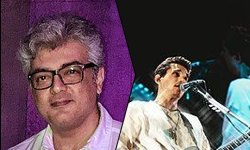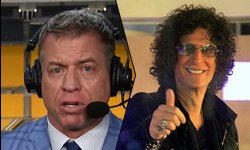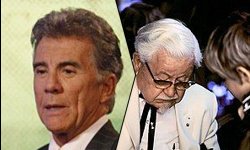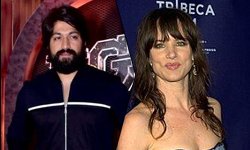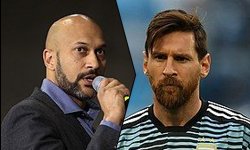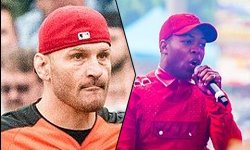BioGraph
Connecting Douglas MacArthur and Swami Vivekananda
Douglas MacArthur
From the viewpoint of both sides, having one especially evil figure in the form of General Hideki Tojo, on whom everything that went wrong could be blamed, was most politically convenient. At a second meeting on 22 March 1946, Fellers told Yonai: {{blockquote|The most influential advocate of un-American thought in the United States is [Benjamin V.] Cohen (a Jew and a Communist), the top adviser to Secretary of State Byrnes. As I told Yonai...
Hideki Tojo
The Greater East Asia Conference in November 1943, participants left to right: Ba Maw, Zhang Jinghui, Wang Jingwei, Hideki Tojo, Wan Waithayakon, José P. Laurel, Subhas Chandra Bose.
Following the 15th Army into India in the U-Go offensive were the Indian nationalist Subhas Chandra Bose and his Indian National Army, as the political purpose of the operation was to provoke a general uprising against British rule in India that might allow the Japanese to take all of India. The roads necessary to properly supply the 150,000 Japanese soldiers committed to invading India would turn into mud when the monsoons arrived, giving the Japanese a very short period of time to break through.
Subhas Chandra Bose
To his mother, he wrote long letters which displayed acquaintance with the ideas of the Bengali mystic Ramakrishna Paramahamsa and his disciple Swami Vivekananda, and the novel ''Ananda Math'' by Bankim Chandra Chatterjee, popular then among young Hindu men.{{Sfn|Gordon|1990|pp=34–35}} Despite the preoccupation, Subhas was able to demonstrate an ability when needed to focus on his studies, to compete, and to succeed in exams.
Subhas Chandra Bose believed that the Bhagavad Gita was a great source of inspiration for the struggle against the British. Swami Vivekananda's teachings on universalism, his nationalist thoughts and his emphasis on social service and reform had all inspired Subhas Chandra Bose from his very young days.
Douglas MacArthur
While there he also served as "an aide to assist at White House functions" at the request of President Theodore Roosevelt.
They remained the only pair until 2001, when Theodore Roosevelt was posthumously awarded for his service during the Spanish–American War, Theodore Roosevelt Jr. having received one posthumously for his gallantry during the World War II Normandy invasion.
Theodore Roosevelt
description =Excerpts from a speech given by Theodore Roosevelt at Carnegie Hall, March 12, 1912. Recorded August 1912 by Thomas Edison. Duration 4:07.}}
A 4.6-minute voice recording, which preserves Roosevelt's lower timbre ranges particularly well for its time, is among those available from the Michigan State University libraries (this is the 1912 recording of ''The Right of the People to Rule'', recorded by Thomas Edison at Carnegie Hall).
Nikola Tesla
At a party thrown by actress Sarah Bernhardt in 1896, Tesla met Indian Hindu monk Swami Vivekananda.
Douglas MacArthur
In a visit to the United States in December 1950, the British prime minister, Clement Attlee, had raised the fears of the British and other European governments that "General MacArthur was running the show".
John Anderson, 1st Viscount Waverley
His career in the civil service was capped by a posting as Governor of Bengal from 1932 to 1937. On 15 January 1935 he met with Bhaktisiddhanta Sarasvati Thakura. Bhaktisiddhanta and Governor of Bengal John Anderson
Bhaktisiddhanta Sarasvati
The birth of Bimala Prasad concurred with the rising influence of the ''bhadralok'' community, literally "gentle or respectable people", a privileged class of Bengalis, largely Hindus, who served the British administration in occupations requiring Western education, and proficiency in English and other languages. Exposed to and influenced by the Western values of the British, including their condescending attitude towards cultural and religious traditions of India, the ''bhadralok ''themselves started questioning and reassessing the tenets of their own religion and customs. Their attempts to rationalise and modernise Hinduism to reconcile it with the Western outlook eventually gave rise to a historical period called the Bengali Renaissance, championed by such prominent reformists as Rammohan Roy and Swami Vivekananda. This trend gradually led to a widespread perception, both in India and in the West, of modern Hinduism as being equivalent to Advaita Vedanta, a conception of the divine as devoid of form and individuality that was hailed by its proponents as the "perennial philosophy" and "the mother of religions". As a result, the other schools of Hinduism, including ''bhakti, ''were gradually relegated in the minds of the Bengali Hindu middle-class to obscurity, and were often seen as a "reactionary and fossilized jumble of empty rituals and idolatrous practices.
Douglas MacArthur
On 28 July 1932, in a clash with the District police, two veterans were shot, and later died. President Herbert Hoover ordered MacArthur to "surround the affected area and clear it without delay". MacArthur brought up troops and tanks and, against the advice of Major Dwight D. Eisenhower, decided to accompany the troops, although he was not in charge of the operation.
Herbert Hoover
At the 1940 Republican National Convention, he again hoped for the presidential nomination, but it went to the internationalist Wendell Willkie, who lost to Roosevelt in the general election.
Wendell Willkie
Wendell and Edith Willkie rest together in Rushville's East Hill Cemetery, the gravesite was marked by a cross, and a book was carved in stone, designed by sculptor Malvina Hoffman, and inscribed with quotations from ''One World''.{{rp|11}}
Malvina Hoffman
As a young girl, she met Swami Vivekananda when he lived and taught in New York City, and several of her later sculptures, like that of Sri Ramakrishna, are located at the Ramakrishna-Vivekananda Center of New York.{{efn|Others sculptures at the Ramakrishna-Vivekananda Center are '' Sarada Devi, Sri Ramakrishna, Swami Vivekananda and Swami Nikhilananda bust for Ramakrishna Vivekananda Center of New York''}}
